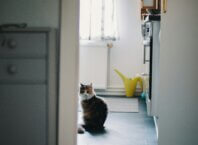
If you are new to plastering, then it is recommended to first study about the different types of plasters. In construction endeavors, plasters play a prime role, whether you are plastering exterior walls or interiors walls, you cannot do without plasters. Therefore, for plastering you need to have a thorough knowledge about the different types of plasters so that you can choose the right type to fit to your particular need and place your order accordingly. Moreover, while plastering walls you need a large amount of materials and if you order wrong material it can cost you more in the end. When it comes to buying plasters for your purpose, you will come across various types of plasters used in construction works.
Sand faced Plaster
Mostly used for surfaces like walls and ceiling, this plaster is a combination of cement and mortar which is directly applied over brick surface to offer a smooth surface as well as it also serves as a waterproof coating over masonry work. This coating is applied twice times on a surface. While the first coat application is done in 1:4 ratio of cement and mortar with essentially coarse grain sands, after a lap of seven to ten days the second coat is applied in 1:3 cement plaster ratio.
There Are Many Advantages of Using This Plaster:
- It offers thermal as well as sound insulation.
- It is damp proof.
- Makes the surface smooth for paint.
- Also, adds decorative touch to the edge of the surface.
Bonding Plaster
This kind of plaster is extensively used as a base coat on walls. It is suitable for engineered bricks as well as concrete blocks. Along with exclusive adhesive strength, it also offers an added advantage of fast drying, with maximum 2 hours of setting period. It is extensively applicable on blocks, breeze blocks and bricks.
Rough Cast Plaster
Particularly known for its decorative property, it is also well known for durability. This plaster is specifically made of sand and gravel mixed in a definite proportion and applied on surfaces which are freshly plastered.
Browning Plaster
This plaster is intensively meant for high absorbent surfaces such as brick walls or building blocks. This is often available in two generic color shades, which are:
- Pink
- Grey
Smooth Cast Plaster
This is quite similar to that of sand faced plaster in respect of effect and appearance which it offers. The finish is quite similar, however instead of coarse grained sand like that of sand faced plaster this kind of plaster uses fine grains of sand. This plastering type also eliminates the need for sponging to expose the sand surface beneath, and this is the reason along with its superior finish why it is mostly preferred for plastering interior walls.
Patching Plaster
Also known as patching plaster, this is a combination of binding plaster and multi finish plaster. This is effectively used for to enhance the smoothness of a surface by leveling any patches, uneven tones and roughness of the surface. It can be used in thicker consistency compared to undercoat plasters. This plaster essentially requires only one coat of plastering. Therefore, when you order your plastering supplies consider the amount which is required for a single coat.
Multi Finish
This is exclusively meant for decorative purposes when you need to smooth the surface and want high finish on it. This is an appropriate choice when you are looking to get decorative wall paints. This is moreover suitable for interior walls, though it can also be used for exteriors.







